Creative Code – Kevin Rogers
$19.00
Discount 20% if your total cart over $150
- Satisfaction Guaranteed
- Fast and forever download link
- Secure Payments
- Reupload FREE
Description
Creative Code is more than just a tool; it’s a paradigm shift for creative professionals, offering a methodical approach to integrating artificial intelligence, specifically GPT, into the demanding landscape of modern creative writing.
Creative Code

In an era defined by rapid technological advancement and an insatiable demand for content, the concept of Creative Code emerges as a vital framework for creative professionals. This innovative system, spearheaded by Kevin Rogers, is fundamentally reshaping how individuals approach their craft, moving beyond the simple adoption of AI tools to a holistic integration that amplifies human creativity rather than overshadowing it. Its core proposition lies in striking a delicate balance: leveraging the unparalleled efficiency of AI while meticulously safeguarding the unique essence of the human creative voice, and crucially, mitigating the pervasive problem of professional burnout that plagues many in high-output creative fields.
The Emergence of the Hybrid Creative
The premise of Creative Code rests on a profound observation: the Hybrid Creative is not a futuristic concept, but a present-day reality. These are individuals who have transcended traditional creative roles, boldly embracing AI as an indispensable partner in their workflow. Their distinct characteristic is an extraordinary ability to marry human intuition and strategic thinking with the computational prowess of AI, resulting in consistently rapid and high-quality output. This symbiotic relationship fosters a remarkable level of productivity that often eludes creatives operating without such advanced technological assistance.
This new breed of professional, as posited by Kevin Rogers, is fundamentally altering the landscape of creative production. They are defined not by their reliance on technology, but by their strategic mastery of it. Unlike those who might view AI with apprehension, the Hybrid Creative sees it as an extension of their own capabilities, a force multiplier that allows them to push the boundaries of what’s possible within their given timelines and energy reserves.
This isn’t merely about using a new software; it’s about a fundamental redefinition of the creative process itself, where repetitive or cognitively intensive tasks can be intelligently delegated, freeing up the human mind for higher-order conceptualization, nuanced ideation, and the cultivation of truly original thought. The competitive edge that these individuals now possess is undeniable, setting a new benchmark for efficiency and creative prolificacy in a world hungry for compelling narratives and meticulously crafted communications.
AI as a Force Multiplier for Creative Output
A cornerstone of Creative Code is its unwavering emphasis on AI’s capacity to serve as an immense force multiplier, specifically targeting the often-overwhelming burden of writing-intensive tasks. The system advocates for a strategic delegation of the sheer volume of text generation to AI, promising a transformative reduction in workload. This isn’t a marginal improvement but a radical shift, with the bold claim of cutting writing workload by up to 80%. Such a dramatic increase in efficiency offers not just incremental gains but a fundamental restructuring of how creative projects are conceived, executed, and delivered.
The impact of this efficiency ripple through every aspect of a creative professional’s life and work. Imagine the hours typically consumed by drafting initial concepts, generating multiple iterations, or refining complex linguistic structures – much of this can now be handled with incredible speed by a trained AI.
This liberation from the “heavy lifting” allows the human to focus on the higher-value aspects of their work: strategic planning, client communication, deep research, and the nuanced refinement that elevates good content to great. The ability to iterate hundreds of times faster, to explore diverse stylistic avenues without significant time investment, and to generate vast quantities of preliminary content, fundamentally changes the economics and timelines of creative projects.
It transforms the creative from a perpetual content generator to a strategic director, a visionary who orchestrates intelligent tools to manifest their artistic and commercial objectives with unprecedented velocity. This shift enables faster turnarounds, the capacity to take on more projects, or simply the luxury of more time for genuine creative exploration and personal well-being.
Safeguarding the Indelible Creative Voice
Perhaps the most potent and reassuring assertion within the philosophy of Creative Code is its unwavering commitment to protecting and honoring the individual’s unique creative voice and identity. In an environment often fraught with concerns that AI might homogenize output or dilute originality, Creative Code actively positions itself as an antidote to such fears. It is explicitly designed not to flatten or diminish an individual’s style, but rather to act as a sophisticated linguistic assistant, capable of mirroring and amplifying the distinctive tones, rhythms, and reasoning patterns inherent in the human creator’s work.
This emphasis on preservation goes beyond mere stylistic imitation; it delves into the very essence of what makes a particular piece of writing yours. It suggests that AI, when properly instructed and integrated through the Creative Code system, becomes a conduit for your voice, not a substitute for it.
The system teaches how to imbue AI with the specific nuances, idiosyncrasies, and even the subtle intellectual fingerprints that distinguish one creative from another. This means that while AI handles the volume and the initial structural elements, the soul of the message, the unique way you phrase an argument, the particular blend of humor or pathos you employ, remains entirely under your direction and control. It effectively offloads the cognitive burden of repetitive word-smithing, allowing the human to remain the ultimate arbiter of vision, tone, and final message.
This protective mechanism ensures that as professionals embrace advanced technological assistance, they do so not at the expense of their artistic integrity or personal brand, but rather as a means to solidify and propagate it across a wider and more efficiently managed output. The fear of “sounding like a robot” is confronted directly, turning AI into a sophisticated mimic of your creative genius, not a dull, generic alternative.
A System for Perpetual Evolution, Not Ephemeral Trend
What distinguishes Creative Code from a mere assortment of prompts or a fleeting industry fad is its deliberate positioning as a comprehensive, living system. This fundamental perspective elevates it beyond temporary solutions, presenting it as a durable framework engineered for longevity and adaptability. The core assertion is that Creative Code is not a static collection of techniques but an evolving methodology, built to seamlessly integrate and optimize as artificial intelligence itself continues its rapid advancements. This forward-thinking design ensures that the investment in learning and applying this system is a perpetual one, designed to remain relevant and effective even as the technological landscape undergoes continuous transformation.
The strategic foresight embedded within Creative Code addresses a critical concern for any creator investing in new technology: obsolescence. Unlike superficial trends that quickly peak and dissipate, this system is built on the principle that its efficacy will not diminish but rather intensify over time. The statement that it “will never become obsolete. Just more optimized” succinctly captures its long-term value proposition.
This means that as GPT and other AI models become more sophisticated, powerful, and nuanced, the Creative Code system is designed to absorb and leverage these advancements, allowing creators to continuously refine their output, expand their capabilities, and maintain their competitive edge. It provides a foundational understanding and a set of adaptable practices that empower individuals to stay ahead of the curve, ensuring that their creative output continues to resonate, even as the tools used to produce it mature. It’s presented as an enduring asset for maintaining originality and efficiency in a rapidly evolving digital ecosystem.
Kevin Rogers
Kevin Rogers, as the architect and driving force behind Creative Code, represents a new vanguard in the intersection of creativity and artificial intelligence. His work is not merely theoretical but deeply practical, rooted in the lived experience of a professional who understands the pressures, demands, and aspirations of freelance and in-house copywriters, founders, creators, and visionaries.
Rogers’s vision is to demystify AI, transforming it from a source of anxiety or an unfamiliar territory into an empowering, accessible ally for creative professionals. His system is a direct response to the prevalent challenges faced by those in high-output creative roles, offering a tangible pathway to sustained productivity, reduced burnout, and, critically, the preservation of personal creative integrity in an increasingly automated world.
The Visionary Behind the System
Kevin Rogers introduces himself not just as a developer of a product, but as a fellow creative who intimately understands the struggles inherent in consistent, high-quality output. His personal stake in the problem he aims to solve lends significant credibility to Creative Code, as he posits that he created the system “not just to publish faster, but to protect the spark I rely on to write well.”
This statement reveals a profound understanding of the delicate balance between efficiency and inspiration. Rogers recognizes that creative work is often a grueling endeavor, demanding endless iterations, adherence to tight deadlines, and the taxing mental energy required to maintain originality across numerous projects. His vision for Creative Code is thus born from a place of empathy and practical necessity, aiming to alleviate the insidious “cost of staying sharp for every draft, every deadline, every day.”
Rogers’s approach transcends the typical product pitch; he positions Creative Code as a holistic solution to a fundamental industry problem. He emphasizes that the system allows for the delegation of the laborious aspects of writing, thereby freeing up the human creative to focus on what truly matters: generating initial ideas, refining core messages, and injecting their unique voice into the final output.
This strategic delegation, he argues, is the key to maintaining both sanity and a competitive edge in a demanding market. By presenting himself as someone who has navigated these challenges and built a system to overcome them, Rogers positions Creative Code not as a luxury, but as an essential toolkit for any serious creative professional looking to thrive in the modern landscape. His vision is built on the belief that technology should serve creativity, enhancing its reach and reducing its inherent burdens, rather than diminishing its intrinsic value.
Training GPT for Authentic Personal Resonance
A pivotal and highly compelling aspect of Kevin Rogers‘s Creative Code system is its bold promise: the ability to train GPT to specifically reflect an individual’s unique voice. This capability directly addresses one of the most significant anxieties surrounding AI-generated content – the fear of homogenization and the loss of distinctive brand identity. Rogers doesn’t just claim this is possible; he asserts its efficacy with a personal testimonial: “Here’s how I’ve trained GPT to sound like me — and it works.” This foundational technical and conceptual innovation is what separates Creative Code from generic prompting strategies, turning a mere tool into a personalized creative assistant.
The mechanism behind this voice replication likely involves sophisticated prompt engineering, the analysis of a specific author’s extensive body of work, and iterative refinement. It implies a detailed deconstruction of an individual’s stylistic DNA: their preferred vocabulary, sentence structures, rhetorical devices, logical flow, humor, empathy, and overall narrative approach. By systematically feeding these unique attributes into the AI’s learning process, Creative Code empowers users to create a bespoke AI persona that writes like them, rather than just writing for them.
This means that whether it’s the conversational tone of a marketing email, the authoritative voice of a white paper, or the evocative language of a creative story, the AI can be fine-tuned to maintain stylistic consistency with the human creator’s established voice. This unparalleled level of customization transforms AI from a generic text generator into a powerful extension of the human mind, capable of maintaining stylistic integrity across vast volumes of output, thereby preserving the authenticity and recognition of a personal or brand voice, which is invaluable in a saturated digital world.
The Promise of Delegation and Control
Central to Kevin Rogers‘s vision for Creative Code is the audacious promise of achieving a profound leap in efficiency: “Delegate 80% of writing workload while maintaining 100% control.” This specific statistic is not merely a marketing claim but represents a radical re-imagining of the creative workflow. It directly confronts the traditional notion that increased output necessarily means increased personal effort and a greater risk of burnout. Instead, Rogers proposes a model where the majority of the rote, time-consuming tasks associated with writing can be intelligently offloaded to AI, while the human remains the absolute orchestrator and final authority.
This nuanced concept of “delegation while maintaining control” is critical. It implies that the AI is not creating autonomously but rather acting as an exceptionally skilled and obedient assistant, executing instructions, generating multiple drafts, and handling the iterative grind that often saps creative energy. The 100% control aspect means that the human creative retains full ownership over the vision, strategy, tone, and final approval of every piece of content.
They guide the AI, provide specific parameters, and perform the high-level editing and refinement that infuse the content with genuine insight and a unique voice. This paradigm shift allows creatives to move from being exhaustive producers to strategic directors, focusing their valuable cognitive resources on conceptualization, nuanced decision-making, and critical evaluation, rather than the mechanical act of generating text. It transforms the creative process from a solitary, often draining, endeavor into a collaborative partnership with a powerful, tireless machine, ultimately enabling an unprecedented volume of high-quality, voice-consistent output without compromising artistic integrity or personal well-being.
Addressing the Core Challenge of Creative Burnout
One of the most compelling aspects of Kevin Rogers‘s argument for Creative Code is its direct and empathic approach to the widespread problem of creative burnout. He intimately understands the relentless demands placed on creative professionals: “The system is designed to address the cost of staying sharp for every draft, every deadline, every day.” This acknowledgment highlights the often-invisible toll that constant ideation, drafting, and refinement take on an individual’s mental and physical well-being. Unlike many tools that focus solely on output metrics, Creative Code also prioritizes the preservation of the human creative’s “spark” and “sanity.”
The insidious nature of burnout often stems from the repetitive, often mentally draining tasks that accompany high-volume creative work. Preparing an initial draft, exploring numerous thematic variations, ensuring grammatical precision, or even just overcoming the blank page syndrome, can be immensely taxing over time.
By enabling the delegation of up to 80% of this workload, Creative Code offers a tangible solution to alleviate this pressure. It allows creatives to reclaim precious time and mental energy previously spent on exhaustive labor, reallocating it towards strategic thinking, conceptual development, or simply rest and rejuvenation. This shift from a perpetual state of “doing” to a state of “directing” empowers creatives to maintain peak performance without sacrificing their emotional or intellectual reserves. It effectively transforms the relationship between the creative and their craft, making it more sustainable and enjoyable.
Kevin Rogers posits that this system is not just about making copywriters faster, but about “protect[ing] the spark [they] rely on to write well” and helping them “honor their voice while using GPT to do the parts that sap their energy.” This focus on well-being as a core benefit positions Creative Code as a truly transformative tool, addressing a critical, often unspoken, challenge in the creative industry.
Key Tenets of Kevin Rogers’s Creative Code System
The principles underpinning Creative Code highlight a clear vision for the future of creative work, emphasizing both practical utility and ethical considerations.
- The Hybrid Creative is already here: This is a key assertion, highlighting the immediate relevance and practicality of the system; it’s not futurist, but current.
- GPT can be trained to reflect individual voice: A core promise is the ability to customize GPT to match specific tones, rhythms, and reasoning styles, directly addressing concerns about generic AI output.
- Delegation of 80% of writing workload while maintaining 100% control: This specific statistic emphasizes the potential for significant efficiency gains while ensuring the human remains the ultimate decision-maker.
- Creative Code is a system for protecting what makes your work yours: This underscores the focus on individuality and the system’s role in preventing the loss of creative identity in the age of AI.
- The system is designed to address the cost of staying sharp for every draft, every deadline, every day: This directly tackles the issue of creative burnout, presenting Creative Code as a solution to the draining aspects of continuous creative output.
- The system is presented as a durable and evolving tool, not a temporary fix: The statement that it “will never become obsolete. Just more optimized” reinforces its long-term value proposition and distinguishes it from fleeting trends.
- “Copywriting is not a conversation. It’s not a trend. It’s not going to be irrelevant in six months. It’s a living system—built to evolve with AI while keeping your originality intact.” This highlights the system’s robust, adaptive nature, designed for sustained relevance.
Conclusion
Creative Code: Hybrid Writing with AI by Kevin Rogers is presented as a practical, comprehensive, and sustainable system designed for creative professionals to seamlessly integrate AI into their workflow. It fundamentally shifts the paradigm by emphasizing significant gains in efficiency and productivity, specifically through the delegation of up to 80% of writing workload, while rigorously prioritizing the preservation of the individual’s unique creative voice and style. The system actively mitigates the risks of burnout prevalent in high-output environments, positioning itself not as a temporary solution or a fleeting trend, but as a durable, evolving framework for navigating and excelling in the dynamic landscape of creative work in the age of artificial intelligence.
Sales Page:_https://learn.copychief.com/creativecode-c

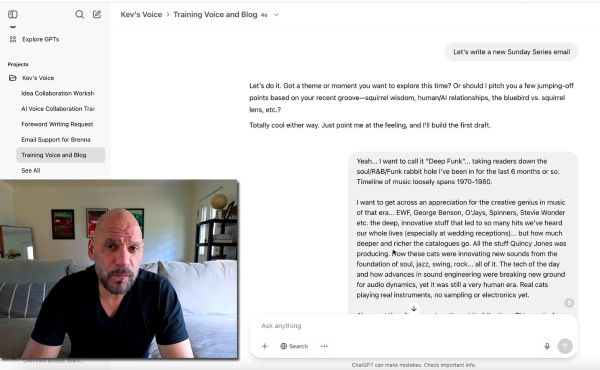
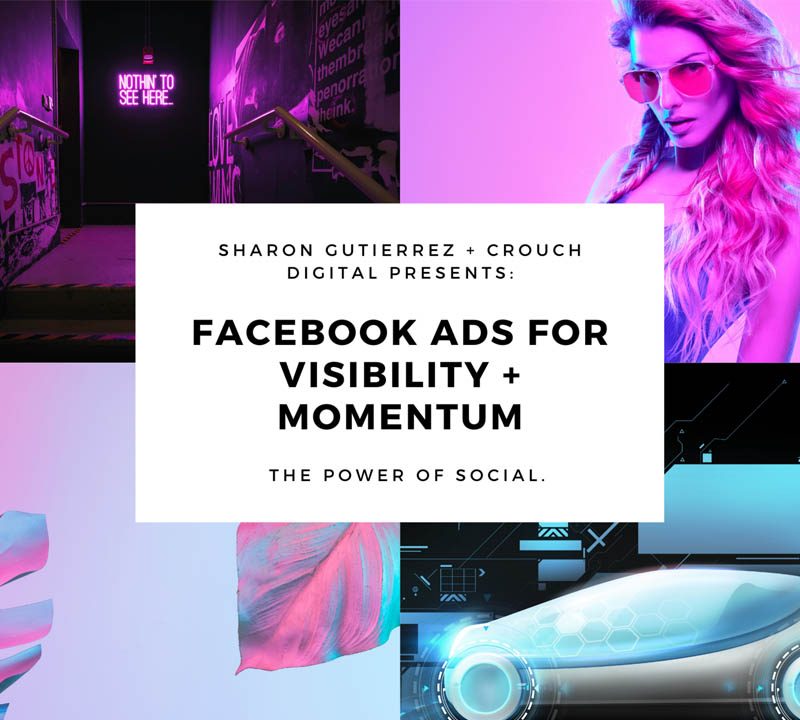
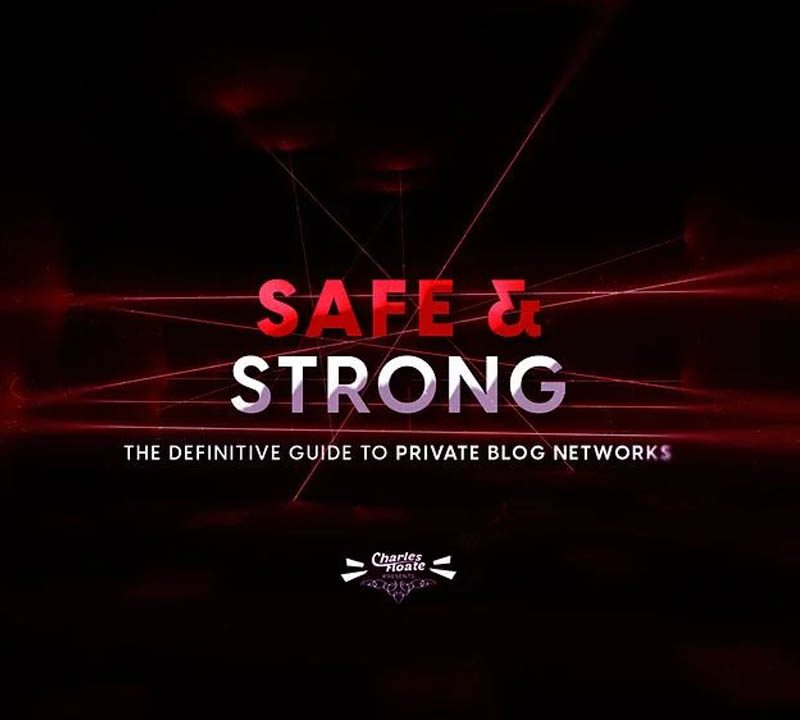


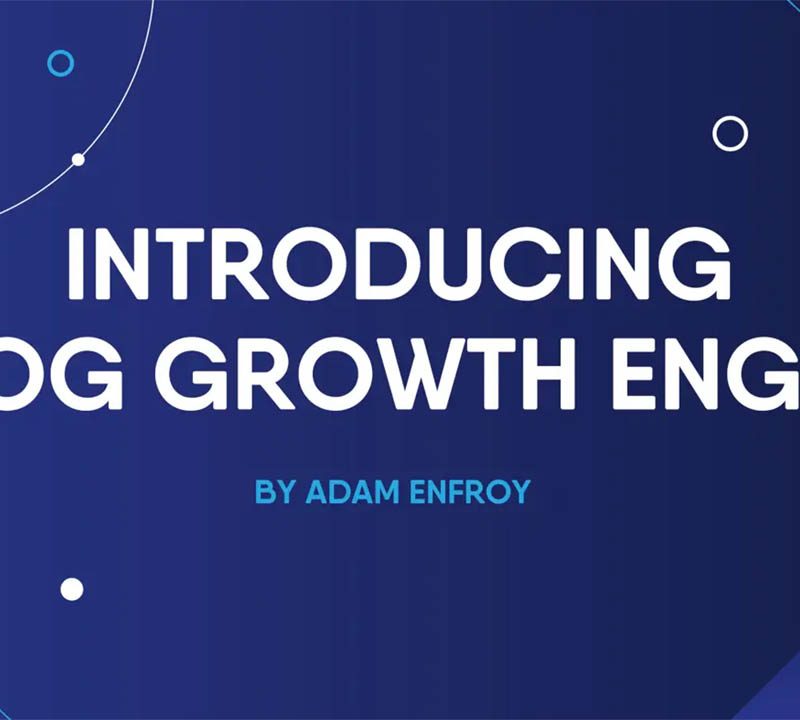 Adam Enfroy – Blog Growth Engine
Adam Enfroy – Blog Growth Engine 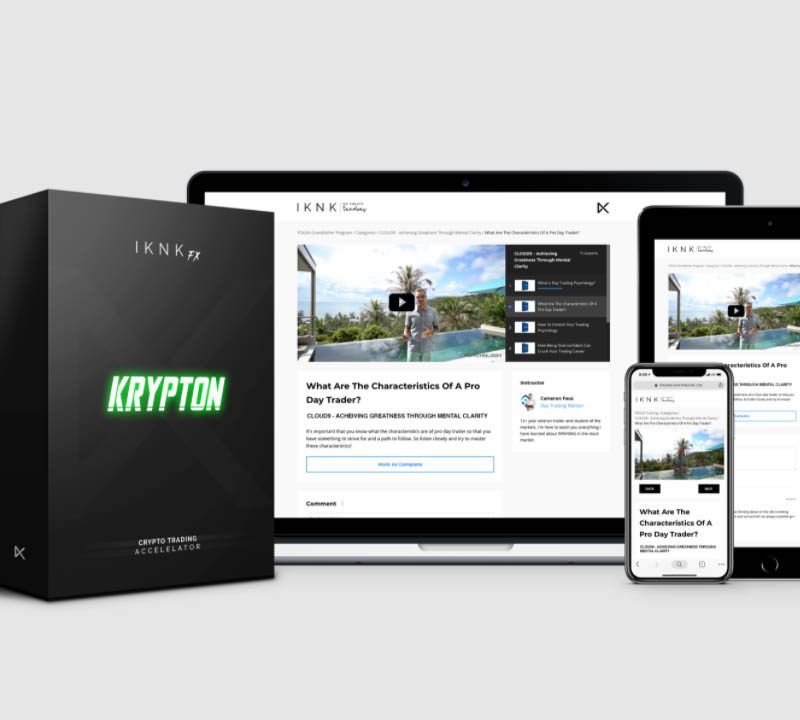 Cameron Fous – The Krypton Crypto System
Cameron Fous – The Krypton Crypto System